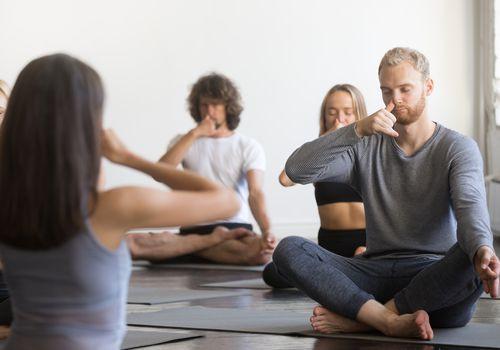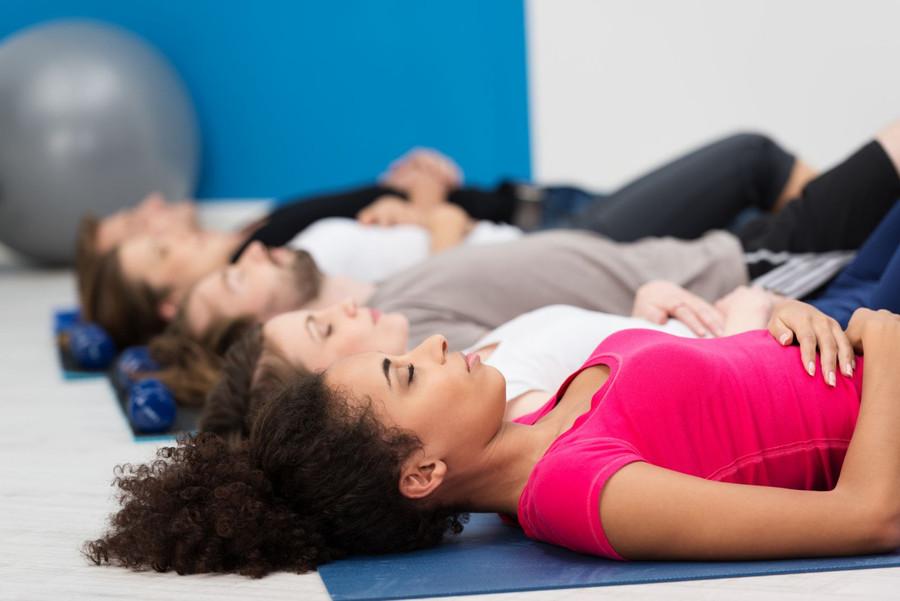The Profound Power of Breathing
Curated from: elemental.medium.com
Ideas, facts & insights covering these topics:
7 ideas
·22.9K reads
124
Explore the World's Best Ideas
Join today and uncover 100+ curated journeys from 50+ topics. Unlock access to our mobile app with extensive features.
Breathing exercises
Breathing is at the core of ancient (and currently trendy) mindfulness practices, from yoga and tai chi to meditation.
However, studies suggest that breathing exercises alone, derived from those ancient yoga practices, can be good for the body and mind.
797
4.37K reads
Deep, controlled breathing
It involves filling the lungs to the max and goes by various names like belly or diaphragmatic breathing.
It has been linked to improved cognitive performance, lower stress levels, and lower blood pressure.
838
3.79K reads
Breathing and yoga
Belief in the benefits of controlled breathing goes back centuries.
Central to ancient Hindu philosophy was prana, described as vital “airs” or “energies” flowing through the body. Stemming from that belief, yoga was built on pranayama or breath retention.
582
2.97K reads
Breathing in meditations
In the first half of the 20th century, deep breathing began to emerge on its own as a relaxation method.
Every relaxation, calming, or meditation technique relies on breathing, which may be the lowest common denominator in all the approaches to calming the body and mind.
553
2.62K reads
Controlling your breathing
Breathing is the only autonomic system we can wrest control of.
Controlled breathing techniques can get one autonomic system under control and in turn affect others (like the heartbeat), alleviate momentary anxiety and longer-term emotional stress, and perhaps even improve physical and cognitive health outcomes.
683
2.65K reads
Belly breathing
Normal human breathing at rest should raise the belly, not the chest.
To relax during a particularly stressful moment, take three slow, deep belly breaths to interrupt the fight-or-flight response.
781
3.2K reads
The belly breath of pranayama
- Find a comfortable place to sit or lie down.
- Breathe in through your nose and fill your lungs from the bottom up, first expanding your belly, then your chest, and finally raising the collar bones.
- Pause.
- Then gently exhale from top to bottom, using your stomach muscles to push out the last of the air.
- Pause. Then repeat.
1.04K
3.27K reads
IDEAS CURATED BY
Jade R.'s ideas are part of this journey:
Learn more about health with this collection
How to delegate tasks efficiently
How to use technology to your advantage
How to optimize your work environment
Related collections
Similar ideas
6 ideas
6 Breathing Exercises to Relax in 10 Minutes or Less
healthland.time.com
7 ideas
The Benefits of Breathing Exercises | Wim Hof Method
wimhofmethod.com
1 idea
Read & Learn
20x Faster
without
deepstash
with
deepstash
with
deepstash
Personalized microlearning
—
100+ Learning Journeys
—
Access to 200,000+ ideas
—
Access to the mobile app
—
Unlimited idea saving
—
—
Unlimited history
—
—
Unlimited listening to ideas
—
—
Downloading & offline access
—
—
Supercharge your mind with one idea per day
Enter your email and spend 1 minute every day to learn something new.
I agree to receive email updates




